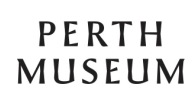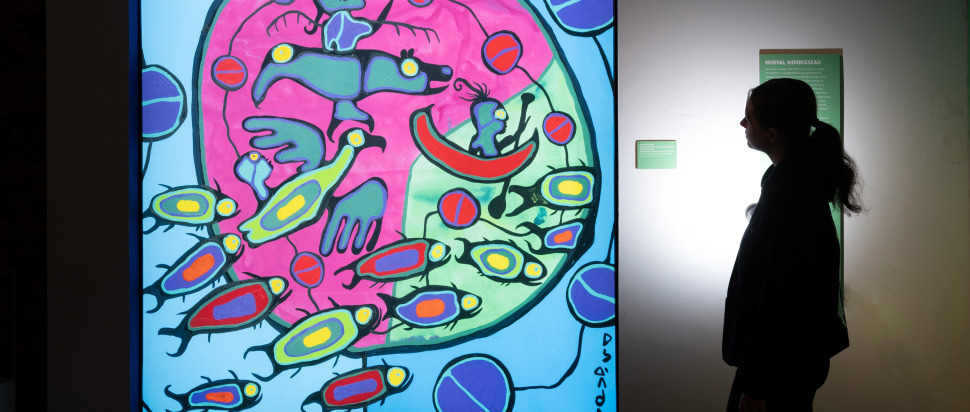The Art of Climate Action: Waters Rising at Perth Museum
Waters Rising, a newly-opened exhibition at the Perth Museum, explores the story of the flood through the lens of ecological breakdown

Floods have long shaped mythology, history and contemporary life, representing both creation and destruction. Across cultures, water is revered as the source of life, a force capable of bringing birth, death and renewal. Today, in the face of rising sea levels, increasing temperatures, and extreme weather events, this symbolism urges a reflection on climate change and prompts deeper discussions. Curated by Niamh Finlay, Waters Rising spans two rooms of Perth Museum: the first delves into global flood myths across cultures through artistic interpretations; the second focuses on the more local events in the Scottish region of Perth and Kinross, with a welcome space showcasing salvaged artefacts from the museum collection, severely damaged during the Great Tay Flood of 1993.
The first gallery opens with ARCHE 2000, a commemorative coin by renowned German designer Heinz Hoyer, featuring a figure adrift in a sea of waste, juxtaposed with an image of ocean pollution in Ghana from 2023, on loan from National Museums Scotland. Adjacent to this is displayed The Torrent (late 1800s) a woodcut by Johannes ten Klooster, inspired by his travels in Indonesia – this particular work was included to highlight the relentless flooding and the country’s ongoing struggles with the loss of land and property. Setting an atmospheric tone to the exhibition is Forty Below (1999), a five-minute video work by Irish filmmaker Clare Langan, the film’s visuals were created using hand-painted camera lenses to achieve an underwater effect.
One of the earliest recorded flood myths, dating back nearly 4,000 years, is the Epic of Gilgamesh from Mesopotamia, inspired by the flooding of the Euphrates river. A replica of the tablet is displayed against a printed, enlarged backdrop of the same, allowing visitors to touch and experience its cuneiform script. This epic is believed to have further influenced the Abrahamic flood myths; also exhibited here is a rare 13th-century Illuminated Bible by William de Brailes; a mezzotint engraving by John Martin titled The Deluge (early 1800s) depicting a dramatic and terrifying moment of figures falling into cavernous depths; and an etching by James Mynde (early 1700s) of the ubiquitous story of Noah’s Ark. Featured alongside this are the Hindu flood stories from the Dashavatara (the ten incarnations of Vishnu). The display includes a gouache drawing of Manu and Matsya, the fish incarnation who warns the first man of an impending flood.
Digressing from punitive flood narratives, the next section highlights the vibrant works of Norval Morrisseau (1932-2007), also known as Copper Thunderbird, a Canadian Indigenous artist from the Ojibwe community. These reproduced pieces reflect his culture and migratory people’s deep connection to the concept of the great flood, viewed as a metaphor for nature’s way of resetting itself. The gallery concludes with Where the Brahmaputra Meets the Clyde (2003), a series of four black-and-white photographs of the two rivers by Alan Kilpatrick, that explore cultural intersections through a personal narrative of Kilpatrick’s father, who emigrated to India in the 1950s post-World War II and post-Independence, along with other Scots in order to work in the burgeoning tea industry.
The second gallery focuses on the hyper-local context of flooding in the Perth and Kinross region, drawing attention to local concerns around climate adaptation, community resilience, and the persisting impacts of floods as we continue to experience them in daily life. Against the Flow (2018), a film by Helen McCrorie documents the Comrie floods and the community’s efforts to cope with the resulting destruction and loss of personal belongings. This film is set against a netted, cube-like installation adorned with personal photographs and postcards of regional floods, gathered from the general public through an open call for online submissions when the exhibition was announced. With many residents holding vivid memories of significant floods that have caused lasting trauma, destroyed property and businesses, and altered lives, the exhibition provides a space for reflection, community engagement and healing.
The second half of the gallery space shifts focus to global climate activism, Scottish grassroots movements, and the experiences of climate refugees. A projected video features footage from the COP28 protests arising from the controversy surrounding its host location in the UAE. Meanwhile, a copy of the Declaration of Radical Independence showcases the Govan Free State Initiative inspired by the Pollok Free State and launched during COP26 in Glasgow. This initiative, organised by the GalGael Trust, represents a unique Scottish approach to activism rooted in Glasgow and further resonates through the display of a large five-metre scroll signed by activists, accompanied by self-printed passports that declares a free state, self-determination and challenges traditional power structures. Collaborating with 10-12 activist groups, including Stand Up for Racism, Perth Against Racism, Extinction Rebellion Dundee, Stop Climate Chaos Scotland, and the GalGael Trust, the exhibition makes diverse approaches to address climate challenges. In reflection of this, another display case features photographs, posters, placards, labels, quotes, and anecdotes from protests and campaigns, including contributions from younger activists, such as those inspired by Greta Thunberg.
Waters Rising, Perth Museum, until 16 Mar, open Mon-Sat 10am-5pm, Sun 11am-4pm, Pay What You Choose
